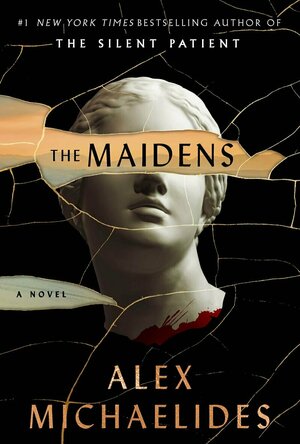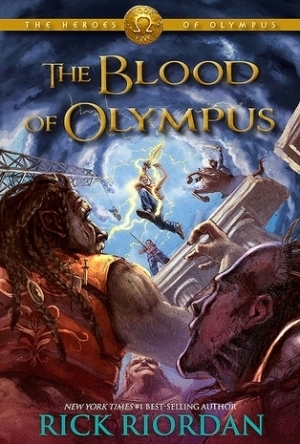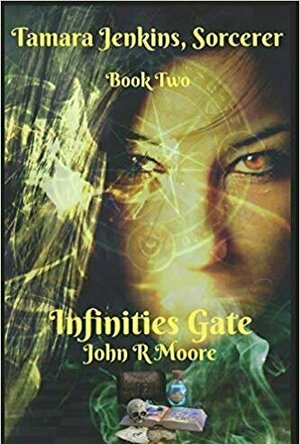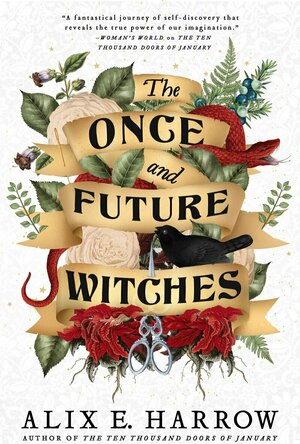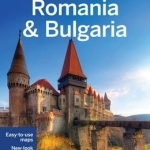
Lonely Planet Romania & Bulgaria
Lonely Planet, Mark Baker, Richard Waters and Chris Deliso
Book
Lonely Planet: The world's leading travel guide publisher Lonely Planet Romania & Bulgaria is your...
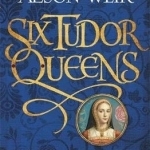
Six Tudor Queens: Katherine of Aragon, the True Queen: Six Tudor Queens 1
Book
*A Sunday Times Top Ten Bestseller* Katherine of Aragon: The True Queen by bestselling historian...
Kristy H (1252 KP) rated The Maidens in Books
Jun 24, 2021
"Death was no stranger to Mariana; it had been her traveling companion since she was a child--keeping close behind her, hovering just over her shoulder. She sometimes felt she had been cursed, as if by some malevolent goddess in a Greek myth, to lose everyone she ever loved."
Unpopular opinion time... this book did not work for me. I did not find it engaging nor interesting. I had to force myself to keep reading, as I did not care for any of the characters, including Mariana and Zoe. Mariana is fixated on Edward Fosca from the beginning and seems convinced she should insert herself in a rather serious murder investigation despite not seeming one bit qualified. I'm not sure how her group therapist qualifications lend her any credentials and she lies constantly, much to the annoyance (justified) and detriment of the police. There are basically no sympathetic characters, and there seems to be no reason to care about the murdered women, as we're given no background on them. Some characters (e.g., Julian) seem inserted for no reason whatsoever.
There is a lot of Greek mythology tucked into the story and perhaps I was just over it, as I've read several books revolving around Greek myths lately. It was a lot, though, and sometimes did not seem relevant to our story.
This thriller is certainly atmospheric, with Cambridge playing a strong role in the setting. You definitely feel a part of the academic setting, and I learned a lot about the university while reading. It's dark and somewhat foreboding, but since I was not fully invested in the story, I could only feel so tense. There are some twists, but the big twist came too late and seemed too preposterous to be truly exciting. The author throws in so many red herrings that you find yourself almost rolling your eyes.
Still, this is a very popular thriller for many readers, so chances are it may work for you. For me, it just didn't hold my interest or seem all that, well, thrilling. 2 stars.
Debbiereadsbook (1620 KP) rated Slippers and Songs (Brodyr Alarch #1) in Books
Feb 23, 2024
Prince Brenin and his brother are summoned to help solve a mystery, to where Princess Tesni goes at night, and ruins her dancing shoes. She can't remember, and no one has been able to solve the riddle. Given that Brenin and his brothers survived a curse, they might be able to finally let Tesni sleep.
There is a book previous to this, but it's not really necessary to read Sealed with A Curse before this one. It would give you the story of how Brenin and his brothers were cursed, and why one brother still has a swan wing instead of an arm, but not really NEEDED to understand this one.
Brenin is called to help Tesni. (I was reading this as Tensi through the whole book though, so if I slip and type it wrong, I'm sorry!) They kinda clash a bit at first, but they do begin to get on once they start spending time together. There is romance here, but it takes time, and it's CLEAN. And I loved that it was! If you follow my reviews, you'll know I will always say I prefer my books on the spicier side, but here?? Nope, loved that it was clean and no violence.
I loved how I did not see who was responsible for Tesni's plight. Did not see that coming at all! Nor why! So well played there!
It's beautifully written. Full of Welsh myths and gods, and I can't remember their names but those same gods are central to Sealed With a Curse, so maybe you SHOULD read that one before this!
My only niggle, and it really is a niggle. I'm picky like that and it's my review but this won't affect my star rating! The book is told from only Brenin's point of view and I really wanted to know what Tesni was thinking, at key points along the way. When she meets Brenin, when she gets up at night, what was going through her mind, when Brenin solves the riddle, and when Brenin first asks that very important question! I loved her reaction, I kinda expected it, but I didn't expect Brenin to run away! He does come good, with a little help from previously aforementioned Welsh gods whose names I can't say let alone spell!
I'm intrigued by these fairytale retells. They are all Brothers Grimm, but ones I've never heard of! I'm looking forward to reading the next one.
I liked Sealed with a Curse, it was a nice read that I gave 4 stars to. But this one? I LOVED this one! And as such, it can only get:
5 full and shiny stars!
*same worded review will appear elsewhere
EmersonRose (320 KP) rated The Blood of Olympus (The Heroes of Olympus #5) in Books
Nov 20, 2019
Alright, now that that is out of the way, let me begin. This book is called Blood of Olympus, it is the fifth and final book in the Heroes of Olympus series (if you should ever desire to read these book, I would recommend starting with the Percy Jackson, and the Olympians series as this series is a sequel series. The author of this book is a writer by the name of Rick Riordan. This book is a young adult fantasy novel. It is the final chapter of the adventure of a group of seven young adults who happen to be demigods, modern day children of the ancient gods of Greece and Rome. This adventure, like many great adventures, is a race to save the world.
For me, the initial draw of the book was that it is a fantasy novel, which is one of my favorite genres, and its focus is on Greek Mythology, something of an obsession of mine. The mythology in these books may not always satisfy all mythology nerds because they do take liberties in how the myths are presented in order to showcase how they might have changed to fit in the modern day world. The way Riordan chooses to represent mythology is often fairly close to original stories, showing that he spends the time researching the myths, and they are clever, funny, and entertaining.
As I read the books, I found myself drawn to the relationships between the characters, not surprising as characters are a key draw for me in literature. By this point in the series, the relationships became especially interesting because you have known some of the characters for ten books now while others are just in their second or third book appearances. The central characters have grown into a substantial group that each have their own unique backgrounds, personalities, and even mythologies that create intriguing tension and bonds. Their bonds grow stronger as they work through new struggles and adventures with the added drama of them being a group of teenagers, which obviously means that there is a fair bit of romance involved as well.
For me personally to get into a story the most important aspect is to be very invested in61w3pqVMCZL._US230_ the characters. This does not mean I have to like them, but I do need to be completely invested in what happens to them. If the storyteller can do this, then I will most likely binge the entire thing whether book, movie, tv show, comic…. regardless whether or not the story is good or my normal cup of tea. This was definitely an initial draw in me reading this second series because I was already very invested in both Percy and Annabeth’s characters, who are among the main characters in this series and the main characters in the previous series. The majority of the characters in this book did capture my emotional investment, which kept me reading all five books, but there were a few I found lacking. Maybe I am the only one who felt this, but I thought that Riordan didn’t spend enough time on some of the new characters to pull me into their plots. Unfortunately, this is common in stories that feature such a large cast of main characters, had the time on each character been even plot points might not have been as successful and honestly, I might have been annoyed to not spend as much time on my favorites.
I would be lying if I were to say this was my favorite book in this series but I still greatly enjoyed it. Besides my problem with not feeling emotionally invested enough in some of the characters, I really do not have any other complaints about the book. It was successful in finishing this series story arc while having plenty of plot of its own. And it ended wrapping just about everything up so that I was satisfied, but open enough to still want more. If this were a regular series, the leftover cliffhangers would be dreadful! But Riordan writes series that capture over-arching plots but that connect to his other book series in this same world, so an ending like this simply promising more books about these characters in another series.
Overall I liked this book, if young adult fantasy is your genre, then I would definitely suggest looking at these books. They do what I require of my urban fantasy stories, mix magic into our real world enough that a part of me can almost believe it could be possible. Characters, world, and plot flowing together into an engaging story that obviously captured my interest enough to read ten and counting of these novels.
*This was a review I found while cleaning that I write a few years ago. I have since read two more Riordan novels and counting! I love the way Riordan writes and appreciate how he seems to continually grow as a writer, always tackling new issues and allowing his characters to have growth. Annabeth and Percy especially, they are two of my all-time favorite characters. I highly recommend reading his books!
EmersonRose (320 KP) rated Infinities Gate in Books
Nov 20, 2019
Infinities Gate is the second book in the Tamara Jenkins, Sorcerer series by author John R. Moore. It tells the story of archaeology professor Tamara Jenkins and the magical world of wizards she does not just fall into but becomes one of the greatest wizards and leader against the fight against darkness. In this book, Tamara and her husband mysteriously disappear on their honeymoon, and it is up to their friends to find them. Along the way, they discover the Infinities Gate and realize that they must keep the gate from opening or risk releasing chaos itself. When talking about his book series Moore says it is “In the order of Indiana Jones crossed with Merlin.” This statement perfectly sums up the atmosphere of the book. This was the crossover I never knew I needed. This mashup was an imaginative and clever premise that immediately had me hooked into the first book which continued into the second.
The story begins quickly, showering you with information, questions, and mysteries. This kind of beginning hooked my attention immediately and made it hard to put the book down. This story is filled with mysteries, interesting twists, and exciting adventures. From wizards to Norse gods, Moore delves into the fantastical intricacies of myths and legends while still making the stories his own. You can’t help but root for Tamara as she makes her way through these magical adventures. I really liked seeing her growth in both books and found her to be an interesting and fun heroine to follow on this journey.
The Celtic and Scottish history is something I love learning about so getting to read about it, and the magical side of it was very exciting for me. My love for both Indiana Jones and Arthurian legend fueled this fascination with this story. From the very beginning of the book, it connected itself to these histories and had events taking place in some of the most magical feeling places in the world like Stonehenge and the Isle of the Sky. This setting brought the magic and history into the book beautifully.
I was very impressed with Moore’s writing style. His descriptions of the world are beautiful as is his attention to the details of history. His characters have a depth which is integral for me in any book I read. I enjoyed reading this series so much I am excited to look into some of his other work. His interest in science fiction and fantasy stories align very much with my favorite genres to read. I cannot wait for the third book in this series so I can continue my journey with the wonderful Tamara. This was a very enjoyable book that offered a quick read into a magical world. I would highly recommend this book to fantasy readers!

Survival Arena™ TD
Games and Stickers
App
Build and customize your arsenal of deadly towers, ammunition, and power-ups until other players...
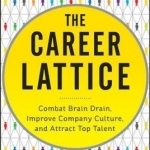
The Career Lattice: Combat Brain Drain, Improve Company Culture, and Attract Top Talent
Book
Reroute your career path for better, faster, longer-lasting success. "If you've been waiting for...
ClareR (6054 KP) rated The Once and Future Witches in Books
Oct 15, 2020
As far back as I can remember (and that’s quite a long way), I’ve loved fairytales, myths and legends. The original stories, if you will. Witches didn’t fare well in these stories, but they were always the characters that I wanted to know more about. What motivated them? Why were they ‘evil’? How did they do THAT?! I wanted to be the ‘good’ version! So this book has ticked a lot of boxes for me. They’re witches, they’re good, normal, women, and they want to make ALL of their lives better.
The main three characters reflect the three stages of a woman’s life (maiden, mother, crone) and also reflect the kinds of lives that many women would (and still do) live.
James Juniper, the youngest, wants to come in to her own power - whether that’s as a suffragist or a witch. She believes that you don’t have to choose: she’s a true fighter and is willing to stand up for her beliefs.
Beatrice Belladonna has escaped her life with the family years ago and works as a librarian: knowledge is her greatest power. Finally, Agnes Amaranth is an unmarried mother who wants to protect her unborn child.
They’ve all been damaged by their abusive father, and this story is as much about them rebuilding their relationship as it is about women coming in to their own power.
The Once and Future Witches has a lot to offer all ages of reader. It makes you think about not just women’s rights, but also race, LGBTQI+ rights, survival, and just standing firm for what you believe in. It shows through the example of the three estranged sisters, that we are all stronger if we stand together.
I didn’t want to stop reading this - I inhaled it, couldn’t put it down, went to bed early two days in a row just to read it, and thought about it in between times. And I’m still thinking about it. If you like witches, you’ll like this. If you like a good story, you’ll love it. If you want to read a book that encompasses all of this and has relevance to our lives today, here’s your book.
This is going to remain a firm favourite for me for a long time. Perhaps I’m one of the future witches?
Many thanks to Little, Brown and NetGalley for my copy of this book.
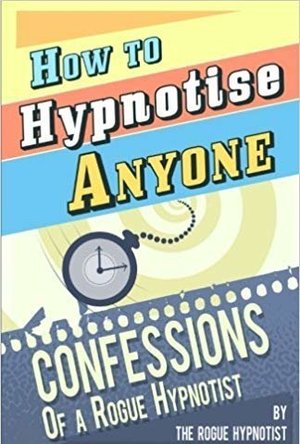
How to Hypnotise Anyone - Confessions of a Rogue Hypnotist
Book
The number 1 Amazon kindle bestseller on hypnosis is now available in paperback! Finally the hidden...
